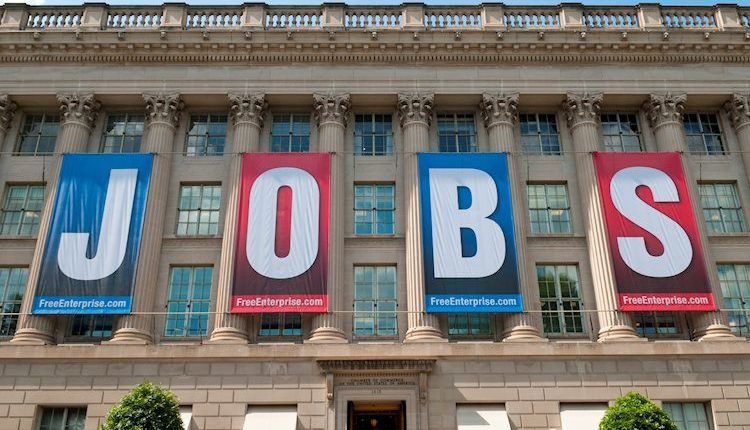- The Greenback roars after a beat on estimates in the US jobs report.
- The earlier US Dollar weakness of this week is being erased in favor of the Greenback.
- US Dollar Index shoots higher and knocks commodities and equities to the floor.
The US Dollar (USD) roars after it gave market participants a false sense of feeling that is was loosing its shine. The US Dollar King is holding on to its name and label as a boxing champion wearing its golden title belt. After a downbeat ISM PMI and ADP miss on estimates, the current US jobs report is smashing it out of the park with the US economy and labor force still at the top of its game.
Fireworks given when the US Jobs was issued with several upside forecasts being broken with an even higher actual print. The additional upward revision from the previous Nonfarm Payroll from 187,000 to 227,000 is only adding more fuel to the bonfire for the Greenback. For the statistics: the US Dollar Index (DXY) books a twelfth straight weekly gain.
Daily digest: US Dollar locks in another weekly gain
- Nonfarm Payrolls are up 336,000 against 187,000 previous. That same 187,000 got revised up to 227,000. The Unemployment rate remained unchanged at 3.8%. The Average Hourly Earnings remained unchanged as well at 0.2% month-over-month.
- The main takeaway seems that still plenty of Americans are finding jobs and firms are still willing to pay a little bit more wage in order to get those workers hired.
- Equities are near flat with only Hong Kong’s Hang Seng index up over 1.5%. European and US equities sink to session’s low as the rate differential soars again and kills any risk on favored trade.
- The CME Group FedWatch Tool shows that markets are pricing in a 81.5% chance that the Federal Reserve will keep interest rates unchanged at its meeting in November. The combination of economic numbers this week has erased nearly every probability of another hike.
- The benchmark 10-year US Treasury yield jumps higher to 4.87% as the rate differential becomes the main driver again for this Friday.
US Dollar Index technical analysis: another week another Dollar
The US Dollar is framing the small weakness from earlier this week as a small hiccup. The US Dollar Index (DXY) is back on track and is locking in a twelvth straight week of gains. The US Dollar Index now has more room to go as the rate differential story will start to pick up again next week.
The US Dollar Index opened around 106.33, though the overheated Relative Strength Index (RSI) is acting as a cap as it trades into an overbought region. With 107.19 – the high of November 30, 2022 – tested on Wednesday, it will be important to see if DXY can get a daily close above that level. If that is the case, 109.30 is the next level to watch.
On the downside, the recent resistance at 105.88 should be seen as first support. Still, that barrier has just been broken to the upside, so it isn’t likely to be strong. Instead, look for 105.12 to do the trick and keep the DXY above 105.00.
Inflation FAQs
Inflation measures the rise in the price of a representative basket of goods and services. Headline inflation is usually expressed as a percentage change on a month-on-month (MoM) and year-on-year (YoY) basis. Core inflation excludes more volatile elements such as food and fuel which can fluctuate because of geopolitical and seasonal factors. Core inflation is the figure economists focus on and is the level targeted by central banks, which are mandated to keep inflation at a manageable level, usually around 2%.
The Consumer Price Index (CPI) measures the change in prices of a basket of goods and services over a period of time. It is usually expressed as a percentage change on a month-on-month (MoM) and year-on-year (YoY) basis. Core CPI is the figure targeted by central banks as it excludes volatile food and fuel inputs. When Core CPI rises above 2% it usually results in higher interest rates and vice versa when it falls below 2%. Since higher interest rates are positive for a currency, higher inflation usually results in a stronger currency. The opposite is true when inflation falls.
Although it may seem counter-intuitive, high inflation in a country pushes up the value of its currency and vice versa for lower inflation. This is because the central bank will normally raise interest rates to combat the higher inflation, which attract more global capital inflows from investors looking for a lucrative place to park their money.
Formerly, Gold was the asset investors turned to in times of high inflation because it preserved its value, and whilst investors will often still buy Gold for its safe-haven properties in times of extreme market turmoil, this is not the case most of the time. This is because when inflation is high, central banks will put up interest rates to combat it.
Higher interest rates are negative for Gold because they increase the opportunity-cost of holding Gold vis-a-vis an interest-bearing asset or placing the money in a cash deposit account. On the flipside, lower inflation tends to be positive for Gold as it brings interest rates down, making the bright metal a more viable investment alternative.
Read the full article here

